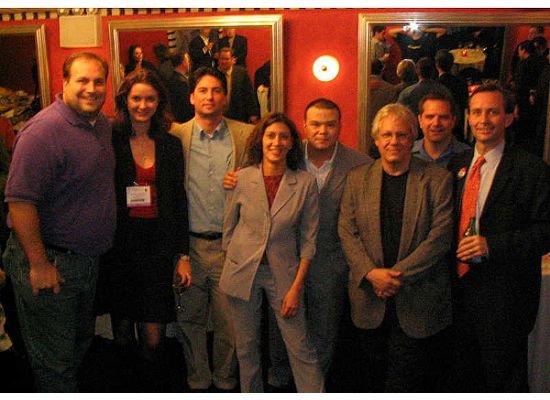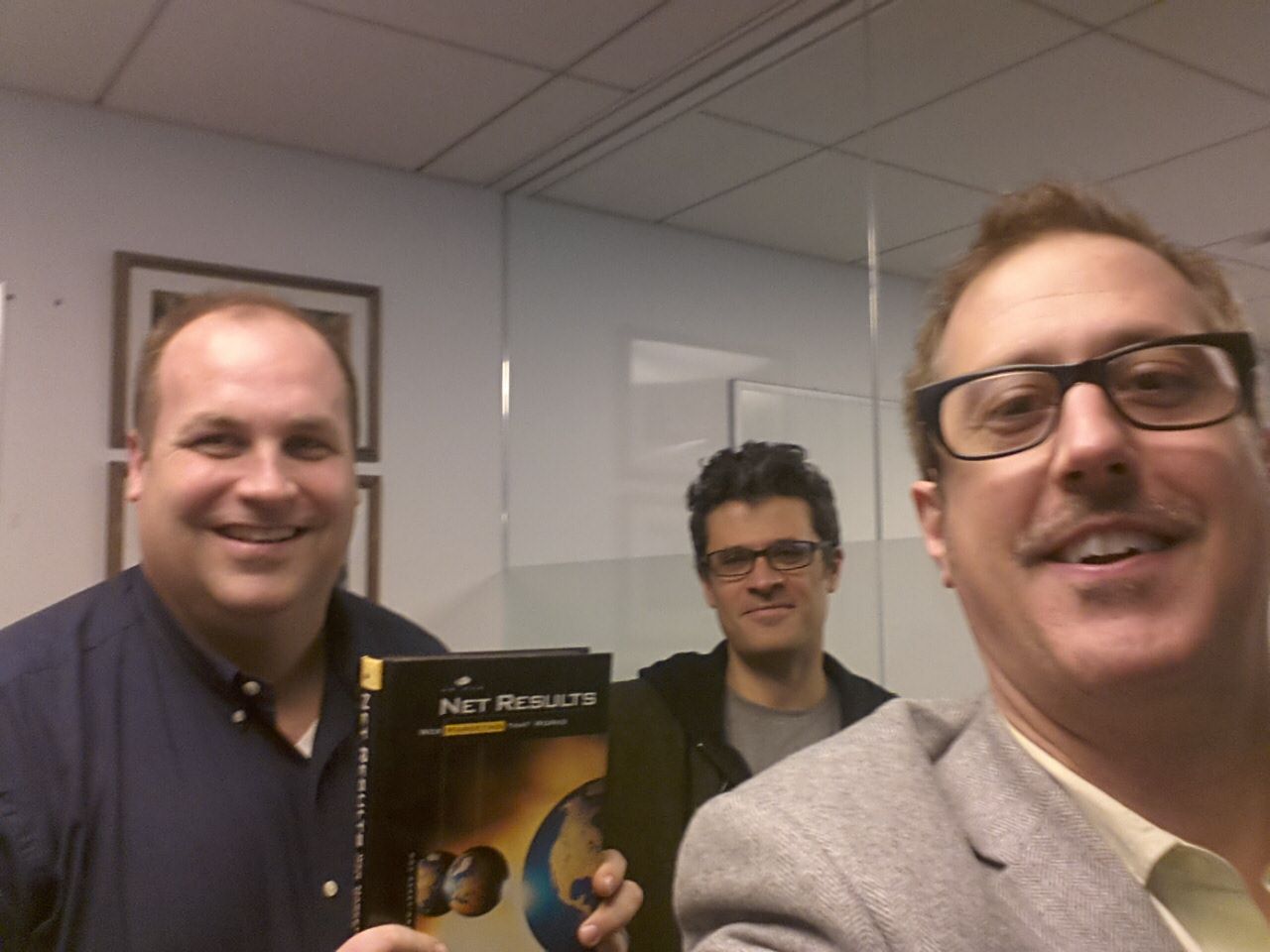Self-Deception Series: If We Prove It, They Will Come
/This is the first in a series of several articles regarding the state of the online marketing industry. Each article in the series deals with the notion of self-deception, the idea that we're kidding ourselves regarding many of the things we think will lead the online marketing industry to success. It is vital to the success of the industry that we examine these instances of self-deception and address them. Online marketing has placed much faith in the idea that if we prove it can contribute to a marketer's overall objectives, that marketer will shift spending into online channels. But when we take stock of the proof we've offered to the marketing community and the percentage of overall marketing spending that most marketers put toward online initiatives, it begs the question, "Does proof really matter?" Online marketing, and online advertising in particular, has always had something to prove. In the rush to the web that occurred in the mid-1990s, many clients treated online advertising as a novelty, but not a necessity. Many advertisers pursued online ad placements as part of their value-added strategy, using credits earned by purchasing print, radio and television ads to secure online ads on websites owned by their traditional media partners. While some advertisers in the early days did pony up with cash, far more advertisers first got their feet wet in online advertising by spending merchandising credits. By and large, online advertising was often thought of as something worth pursuing, but not with an expenditure of media budget dollars.
Of course, the dot com mania of the mid to late 1990s brought about significant expenditures on the part of marketers, but if you recall the insanity of that period, you'll remember what the announcement of an advertising partnership with Yahoo!, AOL, Microsoft, Excite or any significantly-sized portal site would do to a company's stock price. The vast majority of online advertising deals structured during that period were meant to achieve one or both of the following:
1) Produce favorable news that would give a huge boost to a company's stock, or 2) Participate in the "Internet Land Grab" in which companies positioned themselves strategically via online advertising partnerships (often excluding competitors) to compete in the "new economy."
It is important to note that the motivating force behind each of these is fear. We'll get to why that's important in a minute.
Remember that in the mid to late 1990s, companies that were tied closely to the Internet's new economy were the darlings of the stock market. Startups that were short on substance and long on the promise of dominating in the new economy created value and market cap out of thin air. (For instance, Yahoo's market cap in the late 1990s briefly exceeded that of all stocks traded in Singapore.) A simple announcement of an expenditure of just a few hundred thousand dollars on an online advertising or marketing partnership with a portal like Yahoo would send stock prices soaring. Some companies that might not have otherwise participated in this land grab were motivated by a fear that they would miss out on this opportunity. But whether that was brought about by shareholder pressure, market pressures, or the fear that a competitor would better leverage market conditions is immaterial. What matters is that the ultimate motivator was fear.
When the dot com bubble burst, online advertising was saddled not only with the stigma of having its foundations in the dot com marketplace, but also with a long, uphill battle to prove its marketing value. "Online advertising doesn't work" became the mantra of many a marketing manager. The online advertising industry set out to prove otherwise.
After the crash, online advertising had proven its effectiveness as a direct response medium only. It seemed to be best-suited for performance-based advertising deals, where advertisers would pay publishers only when a prospect clicked on an ad, generated a sales lead or made an actual online transaction. During the period following the bursting of the dot com bubble, many publishers kept themselves afloat by running direct response advertisers.
But what the online ad industry hadn’t yet done was to prove that online advertising could brand like more established media like television, radio, print and out-of-home. The most significant study that had been done to date was a 1996 research initiative by Hotwired that attempted to answer the question of whether online advertising could brand. Working with Millward Brown, Hotwired used an adaptation of a method often used in traditional media (test and control) to show that there was value in an online impression. By the time the bubble burst, however, many potential advertisers questioned whether the results of the study were relevant in the post-bubble world. Since the study had been conducted, the web had evolved into an environment that was exceedingly cluttered with elements competing for consumer attention (several ad units per page). Mentioning Hotwired’s study in 2001 was more likely to raise more questions than were answered by the study.
A company called Dynamic Logic emerged in 1999 to provide, among other things, turnkey branding studies that could be executed along with an online advertising campaign that would help prove the branding effectiveness of the campaign in several categories familiar to brand advertisers: awareness, association and favorability. However, it took time for Dynamic Logic to establish itself as a standard in the online ad community. An exclusive deal with 24/7 Media in its first year of existence established Dynamic Logic’s AdIndex product, giving it legitimacy, but it also hampered the company’s ability to emerge as a standard across a majority of publishers within the industry.
By 2001, however, the efforts of Millward Brown and Dynamic Logic were well-known in the online advertising industry. Simply put, the evidence that online advertising could produce measurable and cost-effective lift in common brand metrics was plentiful.
We offered the proof. Did marketers once again flock to the Internet to take advantage of what this emerging medium had to offer? By and large, the answer was no. The period between 2001 and 2003 was the most challenging period in the history of online advertising, in which direct response advertising dominated the Internet and brand advertising campaigns were comparatively few and far between.
For the most part, this was due to the economic climate of the time. An impending recession forced most advertisers to stick to channels that were proven to work. Many advertising budgets were slashed to conserve cash and any unnecessary risks taken with the remaining budgets were, simply put, an excuse for executive management to reevaluate marketing personnel.
Again, the online advertising community believed more proof was needed. Brand managers and other marketing professionals staved off commitments to online advertising by questioning whether or not an online ad campaign would work in that advertiser’s specific product category, or whether online ads could break through in increasingly cluttered online environments. In effect, these were stall tactics. Most advertisers who were actively pursuing online advertising campaigns were doing so because of its prior successes, in most cases in the realm of direct response, in order to maintain the flow of leads, sales and traffic to their websites.
Meanwhile, the online advertising industry was busy producing more proof that online advertising worked. The talk in the marketing industry as a whole was dominated by discussions about the fragmentation of media consumption habits. It was simply becoming harder to achieve significant reach against basic demographic audiences with a mix of what had traditionally worked for most advertisers in the past – print, radio and television. This was due to the fact that the consumption of alternative media, including the Internet, video games and other distractions, was eroding traditional media audiences. During this period, the online advertising industry released several compelling arguments for advertising online, including:
- Compelling arguments from major publishers and the Online Publishers Association that the Internet was one of the only ways to reach working men and women during the workday.
- Media mix studies from the Interactive Advertising Bureau demonstrating that increased spending on online advertising would yield more efficiency in communicating brand messages to key demographic audiences. (Either advertisers could achieve the same goals by spending less, or they could achieve incremental reach by shifting budget dollars from traditional media to online media.)
- Reports showing that media fragmentation was continuing to accelerate and that mass audiences could not be reached in the same manner that advertisers had been accustomed to.
These landmark announcements are just a sampling of the larger body of proof that the industry has offered up. We’ve also seen countless case studies from the IAB, the OPA and major online publishers, studies specific to product categories, online marketing best practices from the likes of DoubleClick, Atlas DMT, and various research companies and more. All along the way, the discussion of the fragmentation of audiences and shifts in consumption habits have continued to make headlines and provide the subject matter for opinion pieces from marketing influentials. The persistent chatter concerning across-the-board decline in television ratings, accompanied by double-digit yearly rate increases, is hotter than ever. Similar declines in audience size have been experienced by old standbys in the media business. Circulation scandals abound in the newspaper business.
While online advertising is experiencing somewhat of a present-day renaissance, it’s not the kind of rebound we might expect given the evidence we’ve put forth concerning online ad effectiveness and changing consumption habits. Many media pundits have noticed that while online spending is increasing steadily, it’s not rebounding in a manner reflective of the magnitude of the sweeping changes in media consumption occurring today. Some have said that this is due to the inertia achieved by traditional media (i.e. – Old habits die hard). Some have said that the adoption of online media will happen “retirement party by retirement party†as the old guard at large traditional advertisers is replaced by one that sees the merits of online advertising. While this may be true, one of the most important things we need to realize is the following:
The case we’ve made for online advertising, in and of itself, is not the driver behind increased spending in online advertising. The real driver is fear.
When I speak of fear, I’m not dismissing the hard work that the online advertising industry has put into making the case for online advertising. (I’d like to think I helped to make the case during my 10 years in the business.) Rather, I’m saying that the proof isn’t the main driver of increased spending. After all, the proof has been there for years and the majority of marketers continue to spend 2 percent or less of their total advertising budgets on online media, if they spend anything at all.
Fear drives increased online spending – fear of losing a critical share point in a highly competitive market, fear of losing ground to competitors, fear of losing relevance to key target audiences, but most of all, fear of losing one’s job. The case we’ve made for online advertising feeds some of these fears, but we can’t definitively say that for most of the leading national advertisers, failure to spend a higher percentage of ad budgets online will cause someone to fear losing their job.
To encourage larger commitments to online advertising, we have to stop kidding ourselves by believing that throwing more proof at the problem is the end solution. Certainly, proof helps, but it won’t solve the problem by itself.
I’m not suggesting that we should go out of our way to strike fear into the hearts of the laggards, either. But we’ve subconsciously taken steps as an industry to insulate the laggards from fear, and those protections should be removed. Here are some things we can do to accelerate commitments from advertisers:
- Put exclusivity back on the table - During the dot com boom, category exclusivity was a component of many large scale media deals. Online publishers are often able to capture audiences that are extremely valuable to advertisers. It’s time to attribute the proper value to those audiences. One way to do that is to offer it exclusively to the forward-thinking advertisers who want to gain access to a specific audience. While many publishers have been hesitant to offer category exclusivity out of fear that they might be closing the door on future revenue opportunities with other advertisers, I’d argue that it’s best to count on the revenue that one can get today while simultaneously creating demand for the inventory in the next cycle. Nothing increases demand like a decrease in supply.
- Put the online upfront back on track - While de facto upfronts have been occurring for the past few years in high-demand categories like automotive, we need a formal structure. The fear that advertisers could be missing out on valuable opportunities to advertise to key audiences will bring them to the table.
- Keep the case studies coming - Well-publicized case studies show the rest of the industry that an advertiser is having success with the online medium. And they generate questions like “How come we aren’t doing this?†among executive managers at major advertisers. The more numbers and the greater the specificity, the better.
- Continue to compare and contrast audience measurement in online with that of other media - If there’s one thing online is good at, it’s specificity with regard to the audience one can reach. Television can’t do it as well. Neither can print or radio. The stories about declining ratings and circ figures will continue. We need to contrast that with continued releases about how shoppers consume information online before visiting retail stores, how the Internet plays an ever-increasing role in helping manage family heath, how working folks can’t be reached with any degree of certainty anywhere but online. If we do this, we will create demand for online media by showing how the medium is unique in its ability to reach key audiences, and thus a fear that the competitor of a major advertiser might move to lock up inventory against said audiences.
- Inform clients more about what competitors are doing online - Use competitive spending tools to let clients know what competitors are spending and where. When exclusive opportunities arise, let clients know the ramifications of passing on the opportunity and the potential for a competitor to benefit from locking your client out. Closely monitor the areas in which your key audiences aggregate, and keep clients apprised of opportunities to reach those audiences in those venues.
I’d like to go on thinking that the merits of our accomplishments in online advertising will lead to increased adoption. After all, it’s easier to have faith in one’s achievements than in the shortcomings of others. But the evidence is staring me right in the face, showing me that fear is the chief motivator. When I took this evidence at face value, I came to the conclusion that continuing to kid ourselves about what motivates advertisers to commit to online media is damaging. It’s damaging in the sense that it distracts us from our business focus – profiting from our ability to guide clients toward online success.
In closing, I’d caution anyone reading this to avoid seeing it as a suggestion that one should generate irrational fears among one’s clients. Quite the contrary. Simply put, we need to do a better job of keeping clients informed about not only the opportunities available to them, but also the strategic ramifications of failing to commit to key online advertising opportunities. They need to know that the online advertising marketplace is becoming more competitive, that demand is slowly accelerating, and that now is a great time to commit to the medium in a significant way. If you’ve done a good job of evangelizing the medium, your clients are aware of the proof that online advertising works. But know that the proof itself is not enough to solidify increased commitments to the medium.












































